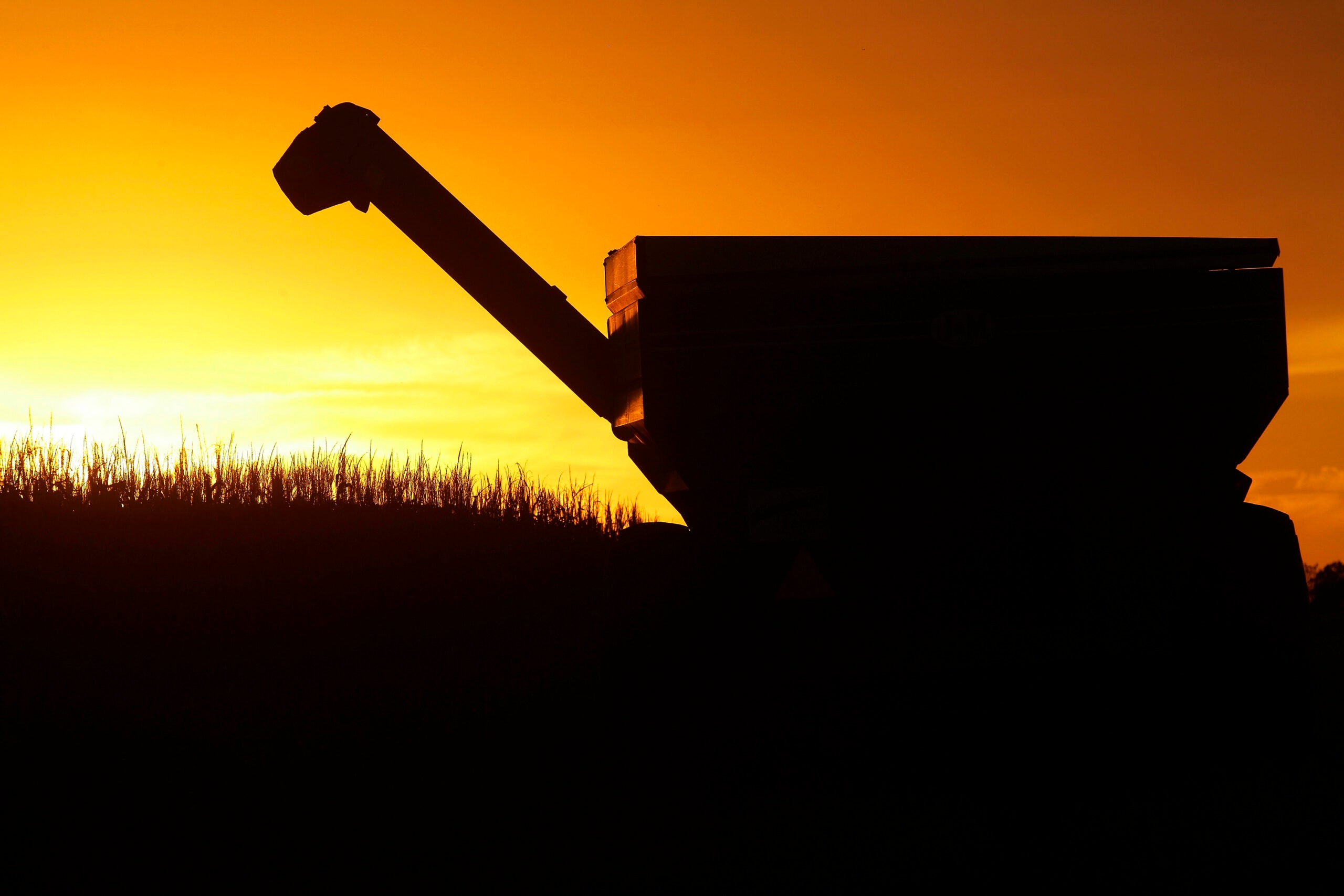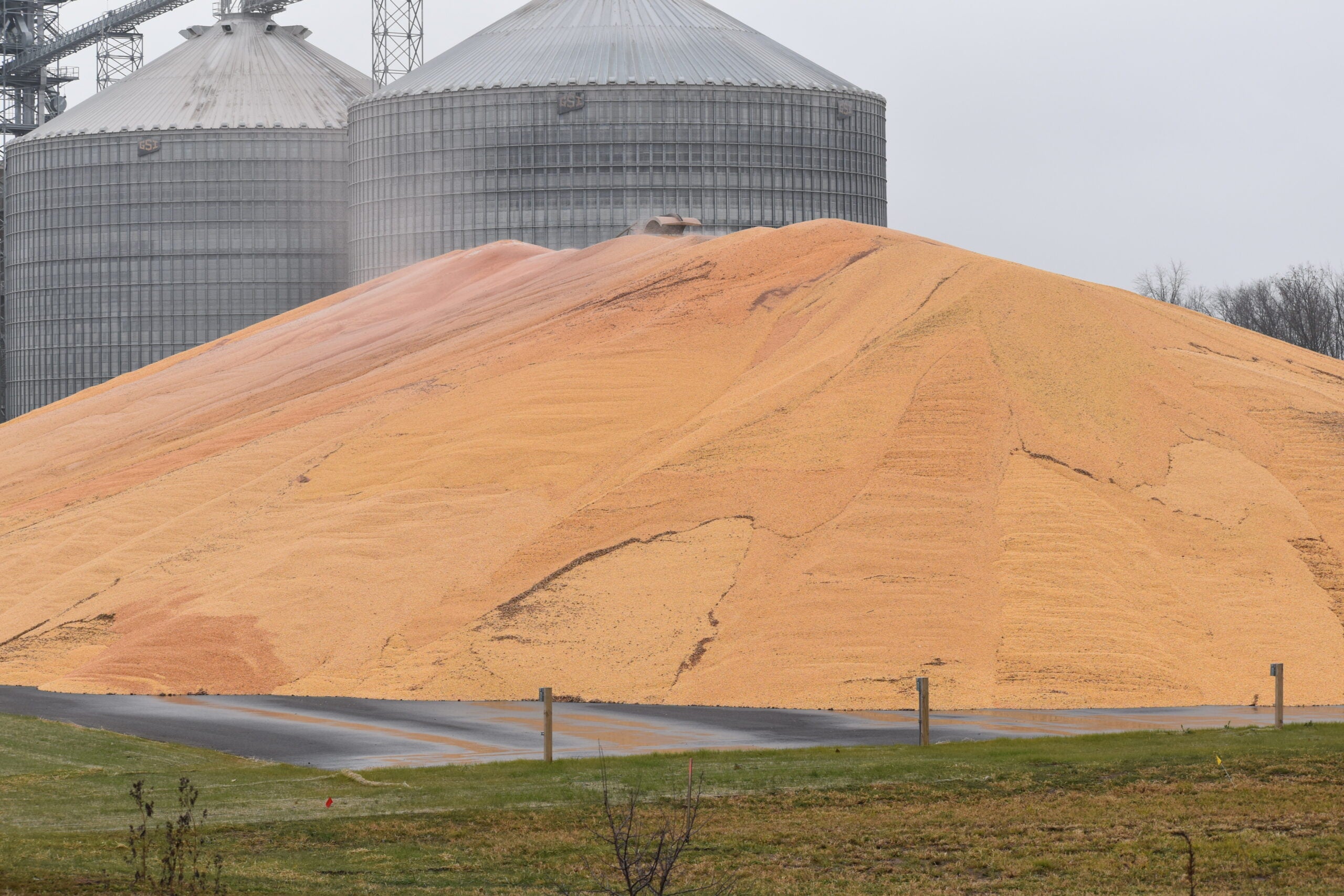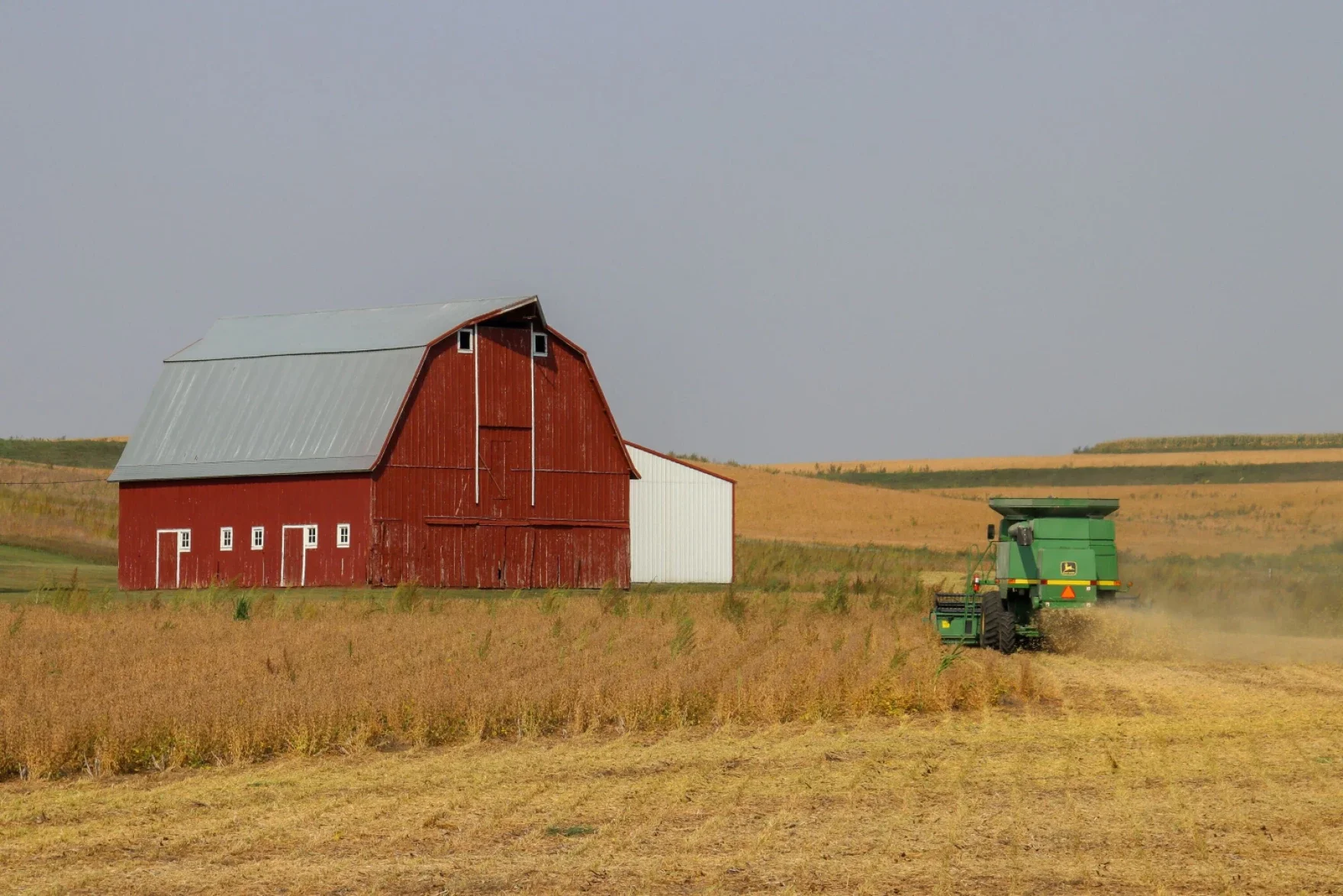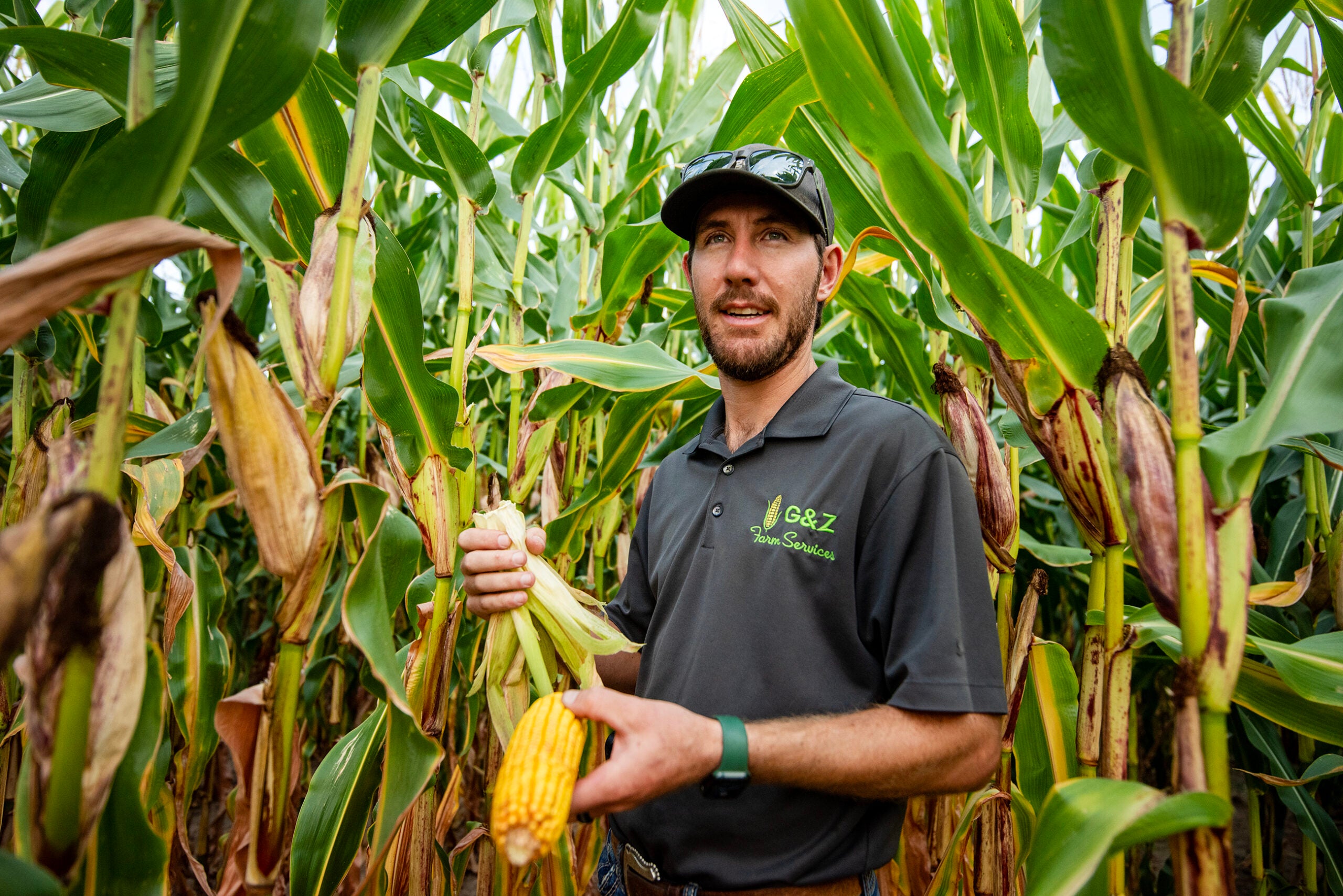As harvest comes to an end in Wisconsin, growers are expected to see record corn yields this year.
The U.S. Department of Agriculture’s National Agricultural Statistics Service forecast an average of 184 bushels of corn per acre.
That’s six bushels, or about 3 percent, higher than the previous record set in 2016 and almost 11 percent higher than what farmers saw last year.
News with a little more humanity
WPR’s “Wisconsin Today” newsletter keeps you connected to the state you love without feeling overwhelmed. No paywall. No agenda. No corporate filter.
Joe Lauer, an agronomy professor for the University of Wisconsin-Madison, said farmers were grateful for more normal weather patterns this year after an extremely wet season in 2019.
“There’s a little more peace of mind, if you will, in kind of going through what I just call an average normal production season,” Lauer said. “We’re going to end up with record yields but it’s just kind of easier psychologically to take.”
Lauer said some southern parts of the state did feel the impact of the severe thunderstorms that swept through Iowa in August, while other areas experienced some drought conditions.
Shawn Conley, soybean and wheat specialist for UW-Madison’s Division of Extension, said a lack of precipitation throughout the state at the end of summer caused the USDA to lower their forecasted yields to 53 bushels per acre. That’s six bushels, or almost 13 percent, higher than last year.
But Conley said most farmers were happy to have the dry weather.
“That allowed farmers to have a lot of days in the field that they can push through and get their crops out of the field in a timely manner,” Conley said.
Conley said the early planting and harvest allowed farmers to get their winter wheat crop planted on time, something many growers have struggled with the last few years. He expects to see a 15 percent increase in the number of wheat acres in 2020.
Conley said this year’s high soybean yields and more favorable prices are a win for rural communities. But he said farm families are also dealing with the impacts of the pandemic, including an increasing number of COVID-19 cases in rural areas.
“One of the challenges that we’ve seen in agriculture, as we’ve seen across all of society, is more challenges with mental health,” Conley said. “Especially as we get into winter, just having the opportunities to meet. I think that’s one thing we all have to work on, not just the rural side.”
Lauer said the high rate of community spread also means more farm owners and employees are testing positive or getting sick from the virus. He said several of the farmers he works with have been hospitalized this fall and that could cause serious delays for harvesting crops.
“Not everybody recovers right away,” Lauer said. “There are plenty of examples of people who might get out of the hospital, but they’re still affected physically by just shortness of breath or not being able to work the long hours that are needed to bring the harvest in.”
He said the coronavirus has also caused some uncertainty about exports, but prices have mostly recovered from their initial drop at the start of the pandemic.
Wisconsin Public Radio, © Copyright 2026, Board of Regents of the University of Wisconsin System and Wisconsin Educational Communications Board.






